Jean-Auguste-Dominique Ingres
(1780-1867)
French Neoclassical Painter
Ingres was the main Neoclassical painter after his mentor Jacques-Louis David died in 1825. He was very much influenced by David an the works of antiquity he saw in the Louvre. His style was in opposition to Eugene Delacroix and the rising Romanticism style. He spent time studying art between Paris and Rome and had many ups and downs throughout his career and at the end of it, there was left no one to continue on the Neoclassical style that he carried on for David. He was varied with his subject matter throughout his career—ranging from historical paintings to portraits but at the end of it, he was the most sought-after society portrait painter in France.
As a student of David, Ingres also had a firm belief that more attention should be paid to the drawing of lines and contours rather than colour. This is what he thought set himself apart from the Romantics. While he held this belief, he still also had an excellent grasp on colour and texture in the way he handled fabrics and clothing.
I find the drawings so enlightening to Ingres’ process. You can see what he chooses to pays attention to in his sketches and how that plays out in the final paintings. He focuses on the softness of the face and hair and pays close attention to the way the fabric creases. All this forethought comes through in his final pieces.
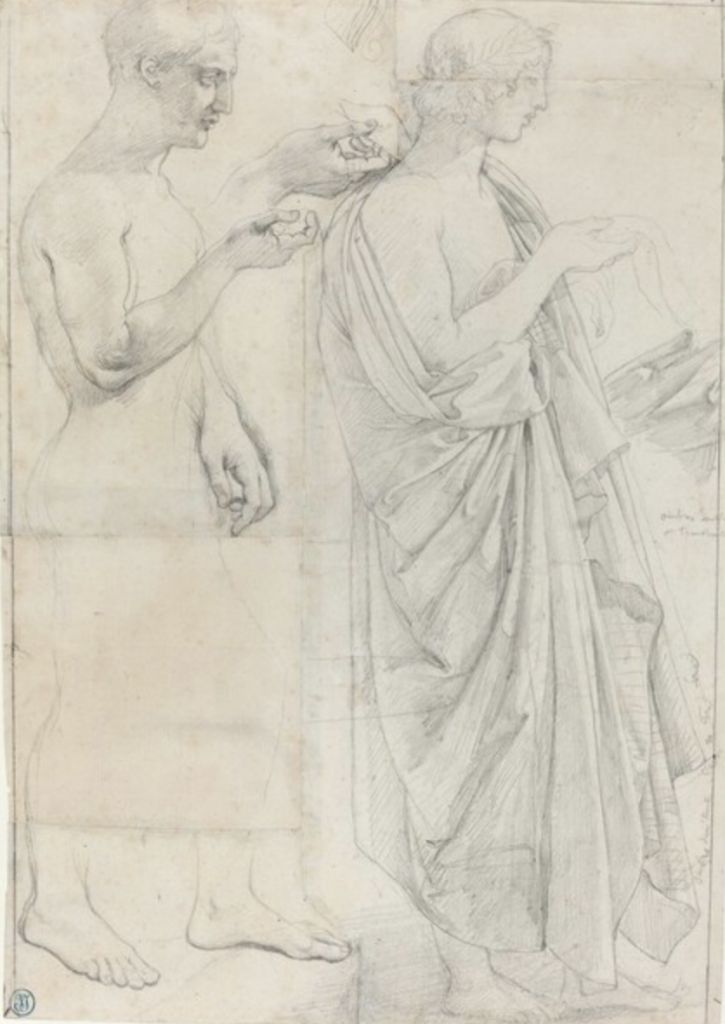
Two Studies of Virgil (1812 and 1825) 
Mrs. Edward Dodwell (1816) 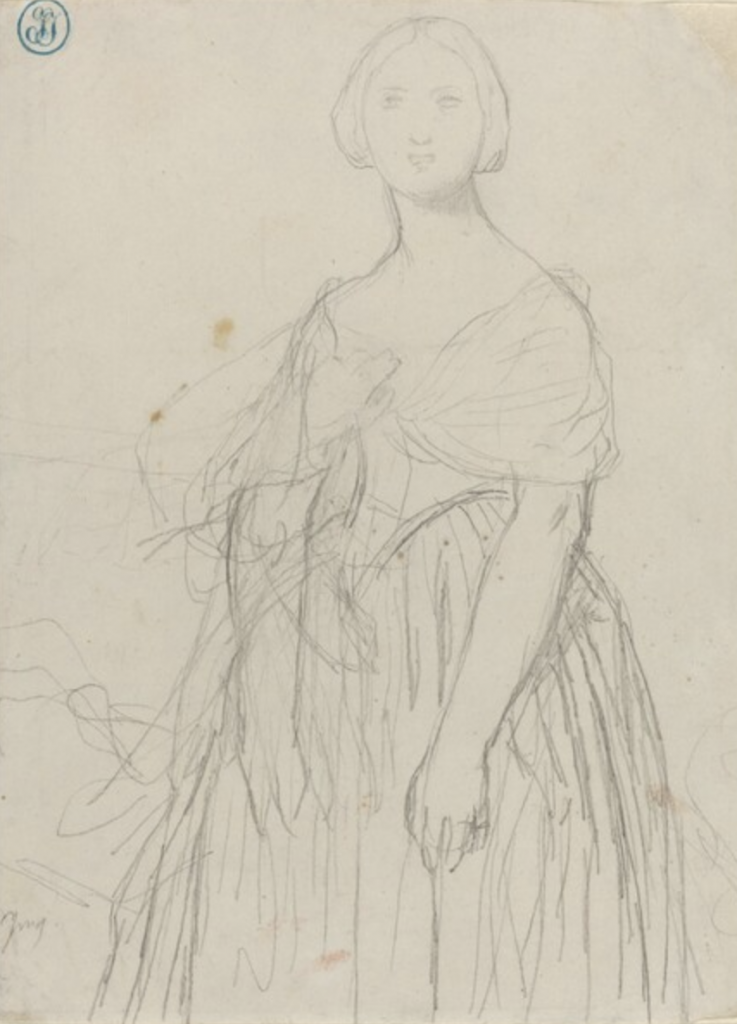
Sketch for Madame Moitessier 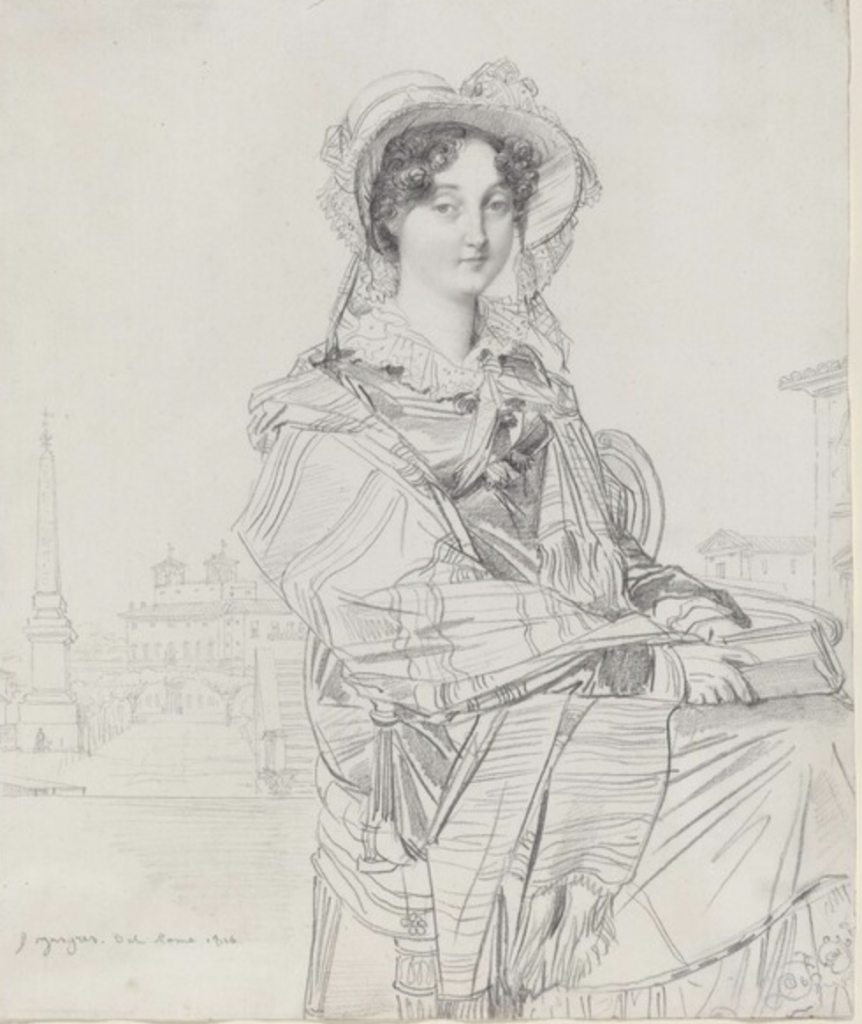
Mrs. Charles Badham (1816)
He was known for his ‘obsessive perfectionism’ and Ingres was actually resented by his contemporaries because he was very good at what he did. His preciseness and smooth finishes are a part of his desire to depict ideal beauty which resulted in some distorted proportions of his figures. His painting of Mademoiselle Caroline Rivière in 1806 (shown below) gives her an elongated neck and nose which just doesn’t look quite anatomically correct.
To me, his figures take on a porcelain doll look—the texture of the skin is rendered to such an unblemished surface that it looks unreal and hard to connect with. The doll-like quality given to the females he paints is a bit uneasy, but at the same time the entire painting just demands to be examined all over as he pays such careful attention to all the elements in the painting.
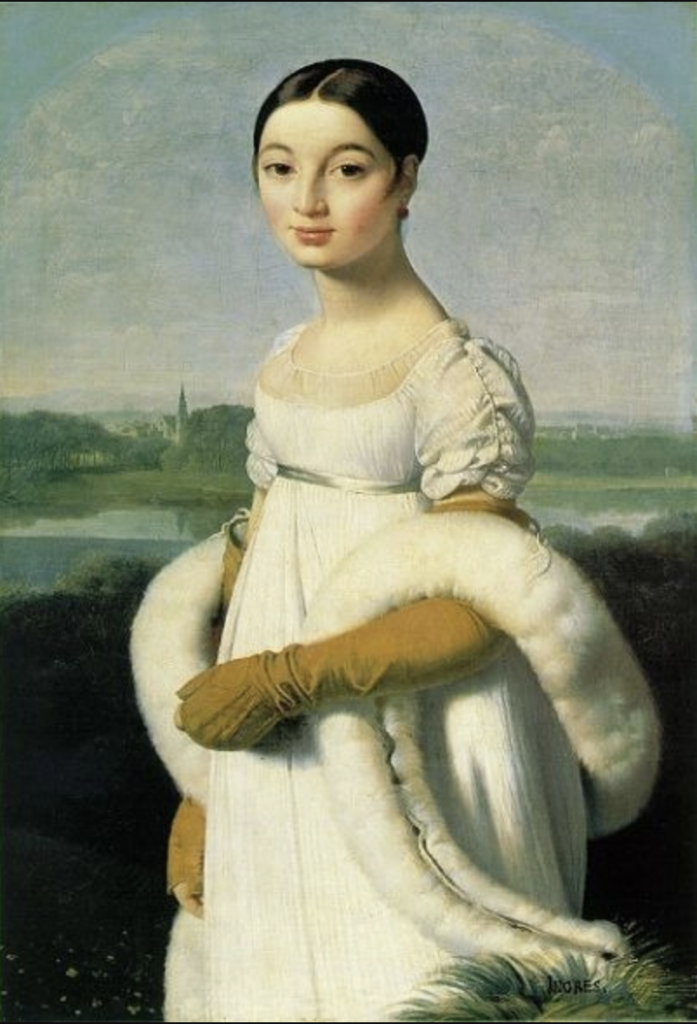
Mademoiselle Caroline Rivière (1806) 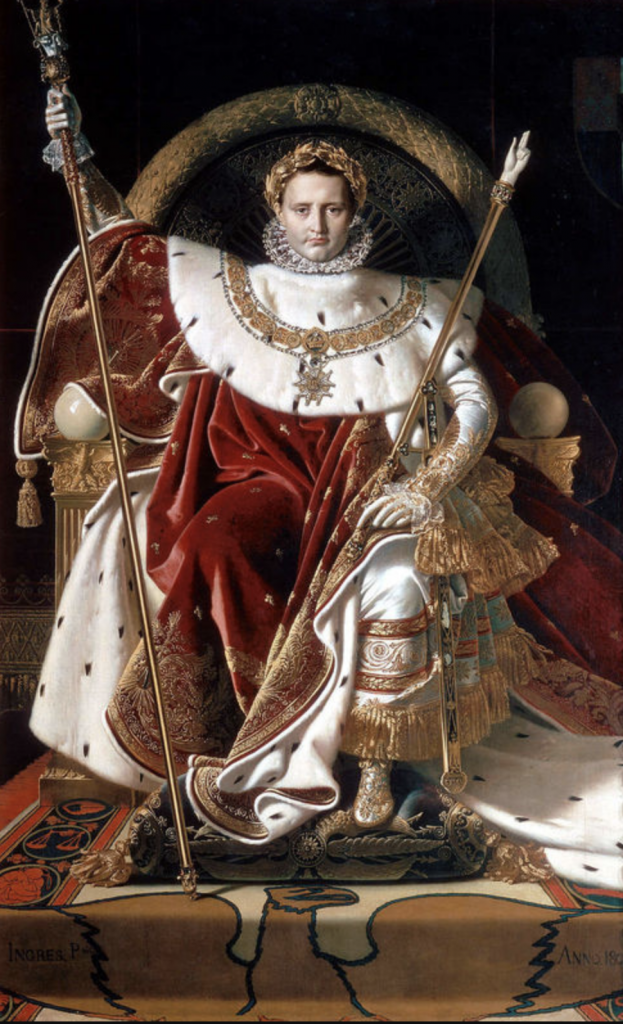
Napoleon I on his Imperial Throne (1806) 
Madame Moitessier (1851)

References
https://www.nga.gov/collection/artist-info.1411.html
http://www.artnet.com/artists/jean-auguste-dominique-ingres/2
https://www.britannica.com/biography/J-A-D-Ingres/Late-life-and-works
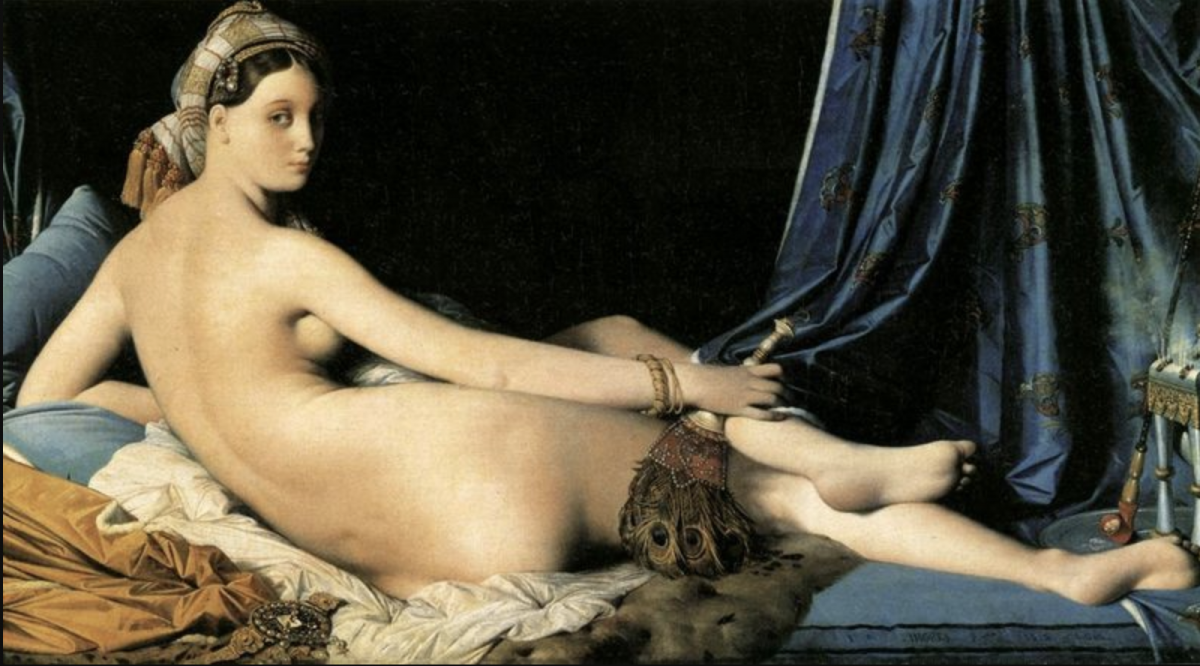
3 replies on “Baroque, Rococo, Neoclassicism, & Romanticism”
Tiffany,
Just checking in again to see where you are with these posts. You have the category above for blog post #2 but Ghirlandaio falls under the first blog post. You will need to cover the period for #2 and submit. I already have you with Holman Hunt for #3.
Jeff
Hi Jeff, I was having some issues with logging into e-portfolios, but I got in today and updated it now with info on Ingres for blog post #2!
Tiffany,
Good to see the post on Ingres! What I like about what you wrote is citing the peculiarity and distortion in his work that, under closer scrutiny, seems to suggest a too slick mannerism while still appreciating his quality.
That is good thoughtful observation. Keep it up.
Jeff